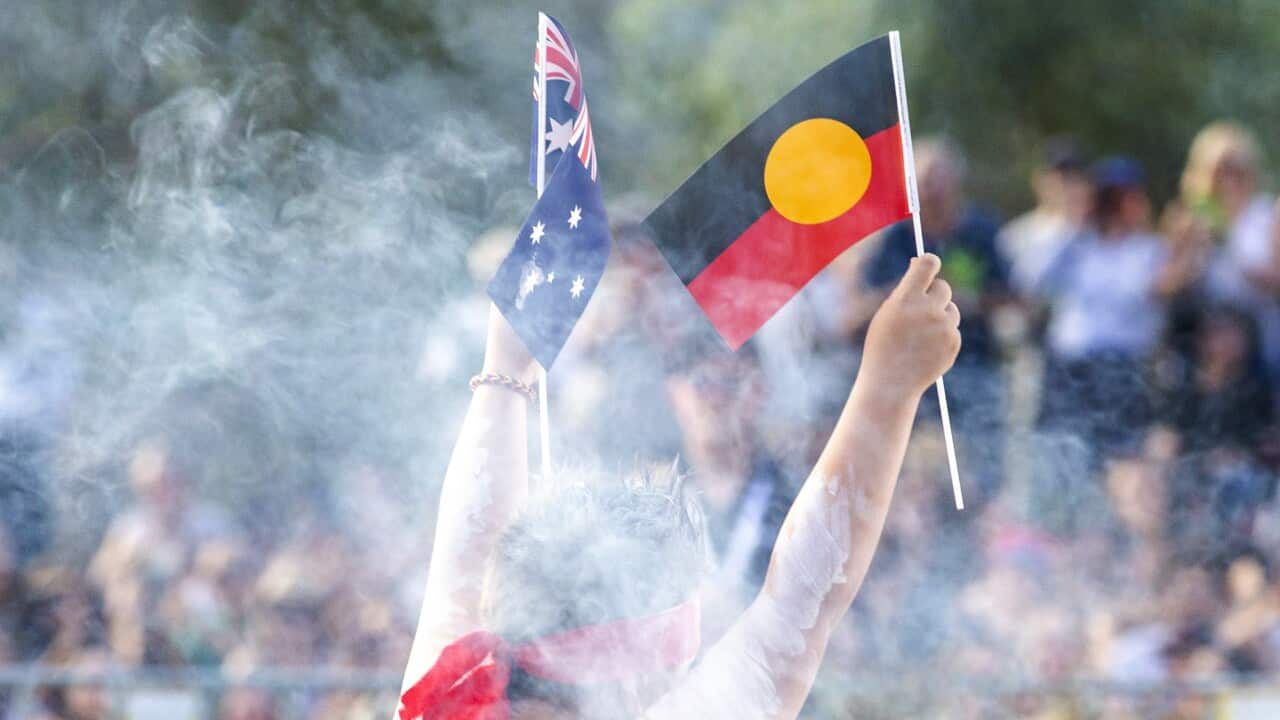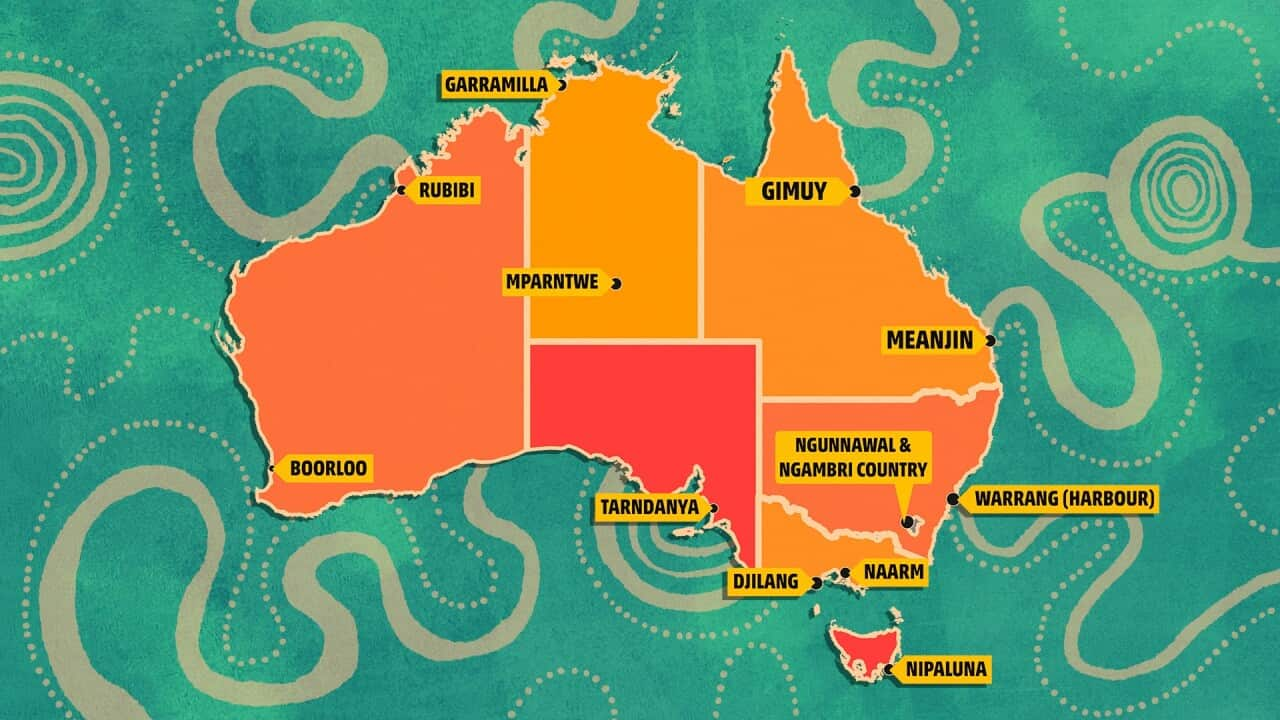As January 26 approaches, more and more councils, organisations, institutions and communities across the country are announcing their intention to cancel Australia Day celebrations and instead stand in solidarity with mourning Aboriginal and Torres Strait Islander groups.
Some are opting for more inclusive events that platform Aboriginal culture, while others are keeping their events and boycotting protocols like the Welcome or Acknowledgement of Country.
According to the Australia Day website, the holiday is a celebration of "". It's a day to "".
"The 26 January is an important date in Australia's history that has evolved over time. Starting as a celebration for emancipated convicts, today it is a day to acknowledge past wrongs and show respect for Aboriginal and Torres Strait Islander Peoples’ survival, resilience and enduring culture," they say.
While the site acknowledged the "more than 65,000 years" of history. There's no mention of why January 26 is the chosen date for the celebration.
For some Aboriginal and Torres Strait Islander peoples, it's a day of mourning and protest. In every capital city and across the nation there are events acknowledging the endurance of culture and survival of First Nations Peoples.
There's a lot of information spinning around, with some Australians believing it's the date Captain Cook 'discovered' Australia, the day he landed in Sydney, or it's the day he 'claimed' Australia for the British Empire.
But, none of those are right.
Spotting the 'Great Southern Land': April 1770
January 26 wasn't the date Captain James Cook first spotted the Australian shoreline - that happened on April 19, 1770.
Cook left England on the HMB Endeavour in May of 1768 with three aims: to track the transit of Venus, to record natural history, a project led by a then 25-year-old botanist Joseph Banks, and to find the 'Great Southern Land'.
It was a secret order from the British Admiralty that asked him to seek a "" and claim it as a possession "in the Name of the King of Great Britain" who at the time was King George the Third.
Two years later, Cook spotted Tolywiarar, known now as Point Hicks at Victoria's East Gippsland.
From there the ship travelled north to Yuin Country, charting the coastline.
Warren Foster, Djiringanj Yuin Traditional Knowledge Holder, told that his Ancestors spotted the ship from the shores.
"Our Old People, they saw him and they handed stories down," he said.
He said the sails of the ship resembled Gurung-gubba, the pelican.
"He's a real greedy fella . . . When you're fishing he'll come up and steal your fish. So you had to watch him. And just the same as us watching him when we're fishing, we had to keep an eye out on that boat," he said.
In an attempt to warn clans up north, Yuin people lit fires along the headland - something Cook documented in his journals on April 21.
"In the pm, we saw the smoke of fire in several places; a certain sign that the country is inhabited," he wrote.
The ship sailed north, charting the eastern coastline before landing only 12 days later.
Landing at Gamay: April 1770
January 26 was not the date Cook landed in Gamay, Botany Bay in South Sydney. That was 12 days after land was spotted, on April 29, 1770.
The Endeavour anchored, and the crew set out in longboats to Gamay. While much public history recalls no welcome party for Cook, were waiting staunch on the shore, adorn in ochre body paint.
"As we approached the shore they all made off except two men, who seemed resolved to oppose our landing," Cook wrote in his journal.
said the warriors were "carrying out their spiritual duty".
"In our culture, it is not permissible to enter another culture's Country without due consent. Consent was always negotiated."

‘Natives Opposing Captain Cook’s Landing’ in Picturesque Atlas of Australasia, 1886. Credit: National Museum of Australia
"The spears didn't hit them because they were only meant to scare them away," said Mr Williams.
Alongside Cook was a Tahitian Polynesian translator, Tupaia, who had helped him in New Zealand. Tupaia and Cook attempted to communicate with the men.
"As soon as I saw this, I ordered the boats to lay upon their oars in order to speak with them but this was to little purpose for neither us nor Tupaia could understand one word they said," Cook wrote.
Cook then loaded a musket with a shot and fired between the warriors. He fired two more shots, wounding one of the men, Cooma. Both warriors retreated to the bush.
The crew stepped onto Dharawal Country and proceeded to stay for eight days and nights before sailing north.
British Crown declares 'sovereignty' of Eastern Australia: August 1770
January 26 was not the date Cook 'claimed' Australia as part of the British Empire - it was on August 22, 1770.
When the ship reached the most northern point of Australia, Cook took to shore and climbed to the highest point of Possession Island.
There he proclaimed the eastern coast as under the rule of the British Empire and .
"Not withstand[ing] I had in the Name of his Majesty, taken possession of several places upon this coast I now once more hoisted English Coulers and in the Name of His Majesty King George the Third took possession of the whole of the Eastern Coast," he wrote in his journal.
that he believed the land "doth not produce any one thing that can become an Article in trade to invite Europeans to fix a settlement upon it".
However, almost two decades later the first penal colony was established.

Captain Cook at Possession Island. Source: Getty / Getty Images
The establishment of Sydney's penal colony: January 26, 1788
The January 26 public holiday and celebrations commemorate the establishment of the first British colony in Australia, and the beginning of colonisation.
Some might believe Cook was responsible for the decision to establish the colony. But it was his fellow crew member James Maria Matra.
Matra was a British Loyalist who sought refuge in England after losing the American Revolutionary War.
In August of 1783, as a way to "atone" for the "loss of" the American colonies.
"By the discoveries and enterprise of our officers, many new countries have been found which know no sovereign and that hold out the most enticing allurements to European adventurers. None are more inviting than New South Wales," he wrote.
He acknowledged Aboriginal people's existence but noted there were "only a few" inhabitants.
In May 1787, the First Fleet set sail to Australia from Portsmouth, England. The 11 ships carrying around 1,400 people were meant to land at Gamay however, couldn't dock in the unsafe bay.
So, on January 26, 1788, the First Fleet landed at Sydney Cove, now Circular Quay and the Union Jack Flag was raised - marking the beginning of colonisation and unleashing violence on the local Aboriginal population.
The fleet was commanded by Captain Arthur Phillip, a British Royal Navy Officer who served as the first governor of the colony of New South Wales.
Records show Governor Phillip's use of guns as threats towards Aboriginal people, his orders for British soldiers to harm Aboriginal people and his approval of the clearing of land and displacement of Aboriginal communities. by settler violence, starvation or diseases like smallpox.
Governor Phillip was well aware of the way Aboriginal people felt about their arrival, writing to Lord Sydney in September that "they are certainly not pleased with us remaining amongst them".

Capt. Arthur Phillip raising the British flag at Sydney Cove, 26 January 1788 (State Library of Victoria). Credit: State Library of Victoria
January 26 declared a public holiday: 1994
The Australia Day public holiday on January 26 is the recognition of the first day of colonisation in Australia.
But, this wasn't always the case, Australia Day first appeared on July 30, 1915, as a way to raise funds for the war. The decision was made two decades later to declare January 26 as Australia Day and in 1994 Prime Minister Paul Keating declared it a public holiday.
In 1938, on the 150th anniversary of the First Fleet, Aboriginal men and women gathered at Australian Hall in Sydney and declared the 'Day of Mourning'. This movement has continued, with some Aboriginal and Torres Strait Islander communities gathering to mourn and protest on the day, recognising it instead as 'Invasion Day' or 'Survival Day'.
It's been thirty years of Australia Day public holidays but with the rise of campaigns such as Change the Date and Abolish the Date gaining momentum and the decision of institutions, organisations, councils and some Australians to boycott Australia Day festivities, the public holiday continuation has become increasingly threatened.









